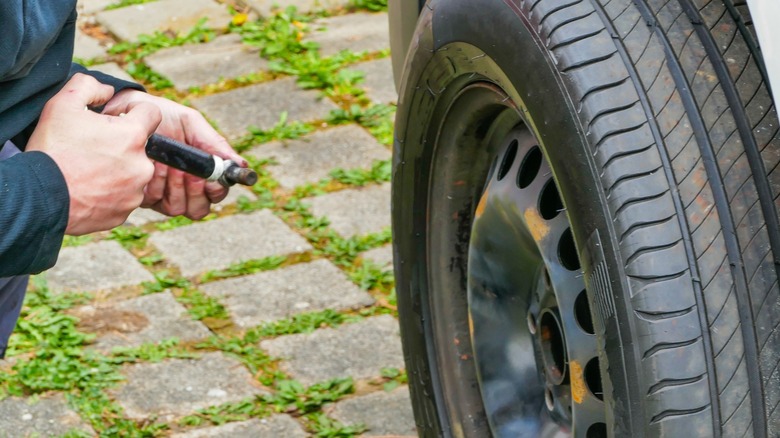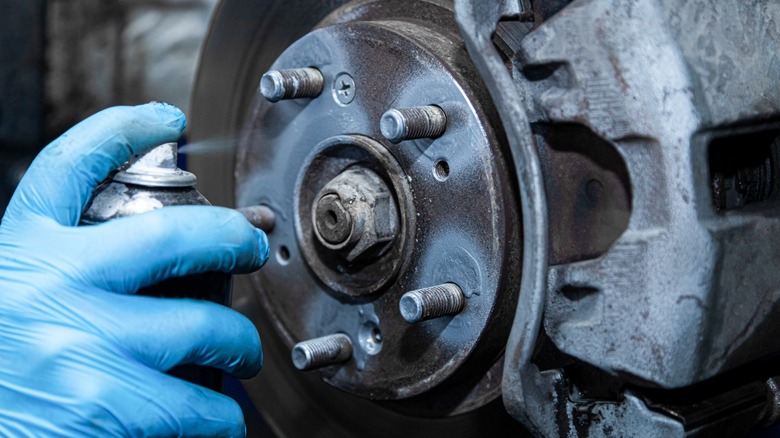Why You Shouldn't Grease Lug Nuts (But Some Mechanics Do Anyway)
After spending the final 16 years of a 38-year aerospace career training Structures Installation Mechanics on the proper way to install threaded fasteners, I can tell you that it is difficult to change the way someone performs a routine task. It is especially difficult when they think their way is better than the right way. Most often, the problem is that their belief is built around a grain of truth, and like a pearl growing around a grain of sand, it gets more polished with time.
Failing to properly tighten lug nuts is one of the common mistakes people make when changing tires on their vehicle. While installing lug nuts with impact wrenches, short ratchets with or without cheater bars, or any other method that doesn't include the proper use of a torque wrench are common factors associated with improperly tightened lug nuts, mistakes happen while using torque wrenches too.
One of those mistakes is applying grease, or other lubrication, to the lug stud or lug nut before installation, unless the automaker specifically requires it. In the aerospace industry, we'd call this a "wet installation" and the torque value called out by engineering in these cases would be significantly lower than the value required for the same threaded fastener installed "dry." That's where the grain of truth comes in, greased lug nuts get tighter because there is less friction.
What's the difference between wet and dry threaded fastener installation?
The difference between installing threaded fasteners in "wet" and "dry" conditions relates to the amount of torque it takes to apply the proper axial load (tension) required to keep them tight without damaging either the stud or the nut. Whether you're a DIY mechanic or a professional, you'll agree that properly torquing the lug nuts on a vehicle is critical, and over tightening a fastener, be it a lug nut or any other bolt, can have disastrous consequences. While under-torqued lug nuts can cause a number of problems, over-torquing the lug nuts on your vehicle can damage the lugs to an extent that the wheel could fly off the car while driving.
The torque difference between wet and dry installation is significant. The Engineering ToolBox predicts that lubricating lug nuts with grease or SAE 30 oil results in a torque reduction of 40% plus or minus 5%. For example, if your vehicle specifies a dry lug nut installation torque of 100 lb-ft and your mechanic lubricates them with grease, they should reduce the torque to 60 lb-ft. If they install them wet and torque to 100 lb-ft the lug nuts will be over-torqued by 40%, which could be dangerous.
How to install lug nuts properly
One of the first steps required when installing lug nuts is to know the manufacturer's wheel installation specifications. Sometimes this information is in your vehicle's owner's manual. If not, you'll have to look at a service manual for your car or get the information from a reputable source such as a service center associated with your vehicle's brand.
The specifications will call out the wet or dry condition of the lug nut assembly, the required amount of torque, and any other special requirements for your vehicle. One of the conditions that cause mechanics to use grease when installing lug nuts is corrosion on the lug studs. However, whether your vehicle calls for wet or dry installation the lug studs should be free of corrosion before you thread lug nuts onto them. Using a wire brush or wire wheel to clean them is usually sufficient, otherwise they may need to be replaced.
Once the wheel is in place and the lug nuts are hand tight, it's time to torque them to spec. It's important to understand your torque wrench so you'll know how to use it properly. When torquing the lug nuts, it's typically best to do so in an alternating pattern going across the center of the wheel instead of going from one to the next.


